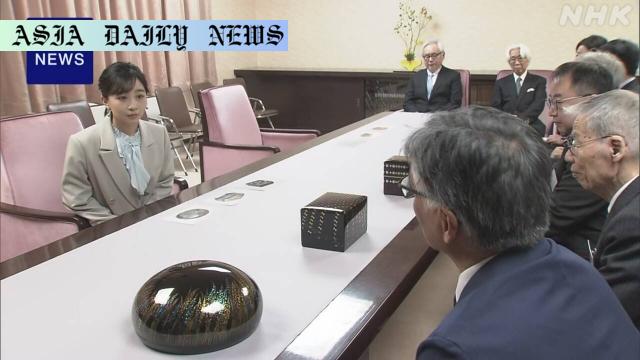Lacquerware: Japan’s Princess Kako explores lacquer arts in quake-hit city, reviving traditions in Wajima.
- Princess Kako visited a lacquerware school in Wajima, damaged by 2024’s New Year quake.
- The school reopened after nine months, teaching unique lacquerware techniques.
- The Princess participated in chinkin and interacted with skilled artisans.
- Living national treasure Nishi Katsuhiro guided her during the experience.
- Her visit symbolizes a revival of tradition and resilience in Wajima.

Princess Kako’s Meaningful Visit to Wajima
Japan’s Princess Kako recently made a heartfelt trip to the Ishikawa Prefectural Wajima Institute of Lacquer Arts, a symbolic institution located on the Noto Peninsula in Japan. Following the devastating magnitude-7.6 earthquake that struck the area on New Year’s Day 2024, the school, much like the city of Wajima, faced considerable challenges. Forced to suspend its operations for nine months, the school finally reopened in October, serving as a beacon of hope and resilience for the community. Princess Kako’s visit marked an important step in acknowledging the monumental effort it took to restore operations in the aftermath of the disaster.
During her visit, the Princess engaged with six artisans who had been continuing their craft in temporary studios. These artists exemplify dedication and skill, preserving traditions that form an essential part of Wajima’s identity. Her interaction with the craftsmen and students at the school not only uplifted community spirits but also highlighted the cultural and historical significance of lacquerware craftsmanship.
The Resilient Legacy of Wajima’s Lacquerware Artisans
One of the most mesmerizing moments of the visit was when Princess Kako observed and even participated in traditional lacquerware techniques. Skilled artisans like Urade Katsuhiko demonstrated the meticulous “makie” technique, where metal powder is sprinkled over hand-drawn decorative motifs. Adding a poetic touch, Urade explained how the lavender flowers from his garden inspired the intricate designs. This interaction captivated Princess Kako, who expressed appreciation for the multi-colored patterns and even commented on how the design seemed to radiate the scent of lavender, emphasizing the delicate interplay between art and nature.
Additionally, the Princess tried her hand at



Commentary
undefined